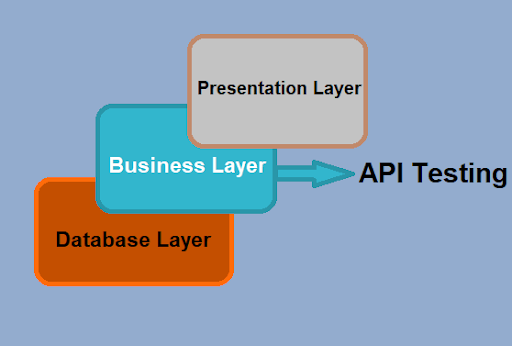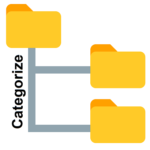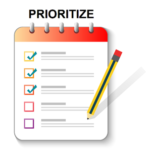
API testing is a critical component of the whole testing process. It deals with testing the business logic of an application, which is typically encompassed in the business layer and is instrumental in handling all the transactions between user interface and underlying data. It is deemed as a part of Integration testing that involves verification of functionality, performance and robustness of API’s.

API’s evolve and develop as and when business and functional requirements change, thus making it even more important to test them on a continuous basis. They also become suitable candidates for automation testing since they need to be tested with every release cycle. Besides checking for the functionality API testing tests for error condition handling, response handling in terms of time and data, performance issues, security issues etc. It is quite evident that API testing is the key to testing the business requirements, thus it is imperative to follow certain best practices in order to achieve good outcome.
Following table gives a quick overview of what to do and what not to do while conducting API testing. These points are further elaborated in entailing paragraphs.
| Do’s | Don’ts |
| Categorize the test cases | Use static data |
| Prioritize API calls | Ignore dependencies |
| Automate | Miss including response time assertions |
| Choose suitable automation tool | Take security testing lightly |
| Positive and Negative testing | Ignore one time call functions |
| Share test results | Keeping documentation on low priority |
| Perform load tests |


An application may involve several APIs which may sometimes run into triple digits. In order to maintain the test cases for quick reference and execution, it is a good idea to categorize them.

Calls made to API’s should be prioritized for ease of testing.

API tests are usually deemed stable and major changes are done mainly when business logic is changed. This makes them perfect candidates for test automation. Since API testing is a type of Black-box testing different combinations of inputs can be used to test a scenario, making this a Data driven test approach. The test data, scripts and API endpoints can be saved for execution at a later stage.

There are several tools, like Parasoft SOATest, POSTMAN, RestAssured, JMeter, Swagger, API Fortress etc that are available in the market for API testing. Choose a suitable tool carefully to leverage the benefits of automation.

For a complete scenario check API testing requires to run both, positive and negative tests. Since API testing is a data driven approach, various combinations of data inputs can be used to test these. In either case, proper care must be taken to ensure that API returns appropriate response to the calling function.

API testing failure should be brought to the attention of all the stakeholders involved on a priority basis. Even better approach would be to send out immediate notifications using team notification channels in event of any failure. This will help the team in taking prompt action.

An API should handle load tests either by functioning as expected or failing gracefully in a predictable manner. It should be able to handle a variety of input data and manage error conditions, in case of failure.
Following points should be taken care of while performing API testing.

In a real life scenario, API endpoints rely on inputs from calling code or on the outputs of other API’s. Using static data embedded in code or otherwise will yield incorrect results when the API is called in the live environment. It is prudent to perform a proper Integration testing of API’s by following actual user and data flows.

API’s often depend on other API’s and sometimes on external services also. It is vital to test the third party API’s in test environment and then test the dependent API along with those API’s to have a holistic picture. In a nutshell, the whole ecosystem needs to be tested in order to ensure that any changes/upgrades in other API’s does not impact the functioning of dependent API’s.

It is important to keep track of the response time of API calls. While a test may pass functionally, there could be a number of reasons for delayed response. This affects the end user experience. Any application which takes too long to compute or load or give results is not what the end user wishes to use. Hence, it is a good practice to include a time based test to check the response time. If API is taking too long to respond then it should be reported so that the developers can look into the code to understand the delayed response.

API’s like any other code are vulnerable to threats and attacks. It becomes even more important to conduct security tests when a third party free/paid API is used. Hence, it is important to test for all possible loopholes and seal them.

Extra care must be taken while making one time function calls like Delete, CloseWindow etc. These have direct effect on the application and must not be treated lightly.

It is good practice to document all the test cases in detail so that they become a ready reckon-er guide and can be used by anyone in the team.
API’s encompass the business and functional logic and are gateway to sensitive data. API’s usage is not limited to just one application and in some cases they can be used across many applications. Hence, developing and testing them thoroughly is a critical task. Webomates tests APIs using Manual and Automation testing. You can take a quick look at the following table to see which tools are already integrated in our Testing as a Service platform.
| Manual API Testing | Automated API Testing |
| Postman | Jersey RESTful Web Services |
| Rest Assured | POSTMAN |
| Swagger | Rest Assured |
| JMeter | JMeter |
| Any REST client or dev tool | Swagger |
| API Fortress |
If you are interested in learning more about the services offered by Webomates, then please click here and schedule a demo, or reach out to us at info@webomates.com. You can also avail a free trial by clicking here.
Tags: API Testing, Postman, REST API, Swagger
Test Smarter, Not Harder: Get Your Free Trial Today!
Start Free Trial
Leave a Reply